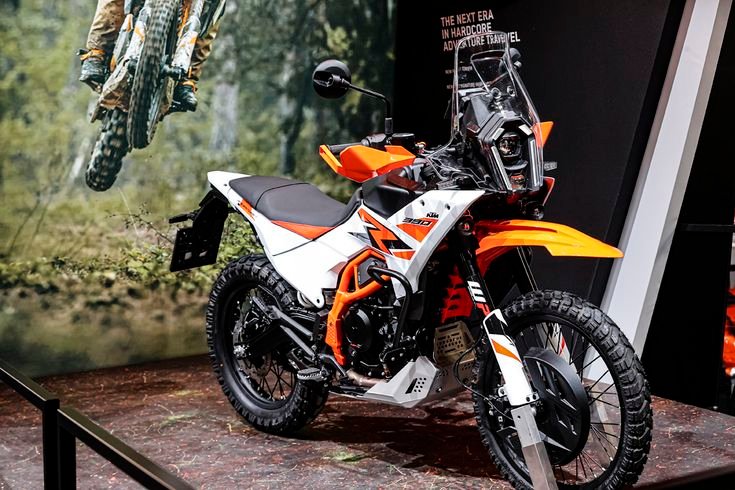
Maintaining an electric vehicle (EV) is generally simpler and more cost-effective than maintaining a traditional gasoline-powered car. EVs have fewer moving parts, no engine oil, and fewer fluids that require regular replacement. However, to ensure optimal performance, maximize battery life, and keep your EV running smoothly, it’s essential to follow certain maintenance practices. This guide provides tips and tricks for maintaining your electric vehicle to help you get the most out of your investment.
1. Regularly Check and Maintain the Battery Health
The battery is the most critical and expensive component of an electric vehicle. Proper maintenance can extend its lifespan and ensure reliable performance.
Tips for Maintaining Battery Health:
- Avoid Frequent Fast Charging: While fast charging is convenient, frequent use can generate heat and put stress on the battery, potentially leading to faster degradation. Whenever possible, use a Level 2 charger for regular charging and reserve fast charging for emergencies or long trips.
- Charge Within the Optimal Range: To maximize battery longevity, keep your charge level between 20% and 80%. Avoid letting the battery drop below 10% or charging it to 100% unless necessary. Most EVs allow you to set charging limits to help maintain an optimal range.
- Monitor Battery Temperature: Extreme temperatures can negatively affect battery performance and lifespan. In hot weather, park in shaded areas or use sunshades to keep the battery cool. In cold weather, precondition the battery by warming it up while the car is still plugged in, which can help reduce the energy drain during your drive.
- Use Battery Management Tools: Many modern EVs come equipped with battery management systems that monitor and regulate battery temperature and state of charge. Use these tools to optimize charging habits and maintain battery health.
2. Follow a Regular Tire Maintenance Schedule
Proper tire maintenance is essential for safety, performance, and energy efficiency in any vehicle, including electric cars.
Tire Maintenance Tips:
- Check Tire Pressure Regularly: Ensure your tires are inflated to the manufacturer’s recommended pressure levels. Properly inflated tires reduce rolling resistance, improving range and extending tire life. Check tire pressure at least once a month and before long trips.
- Rotate Tires Periodically: Regularly rotating your tires helps ensure even wear and prolongs their lifespan. Refer to your vehicle’s manual for the recommended tire rotation interval, typically every 6,000 to 8,000 miles.
- Monitor Tire Tread and Alignment: Inspect the tire tread depth and look for signs of uneven wear, which may indicate alignment issues. Proper wheel alignment improves handling and extends tire life, so have your alignment checked periodically or if you notice any irregularities in driving.
3. Keep the Braking System in Good Condition
While electric vehicles use regenerative braking to recover energy and reduce wear on traditional brakes, regular maintenance of the braking system is still important.
Brake Maintenance Tips:
- Inspect Brake Pads and Rotors: Check the condition of the brake pads and rotors regularly. Although regenerative braking reduces wear on these components, they still require periodic inspection and replacement to ensure optimal braking performance.
- Use Regenerative Braking: Maximize the use of regenerative braking to reduce reliance on traditional brakes. This not only improves energy efficiency but also prolongs the life of brake pads and rotors.
- Flush Brake Fluid as Needed: Brake fluid absorbs moisture over time, which can reduce braking efficiency. Follow the manufacturer’s recommendation for brake fluid replacement intervals, typically every two to three years.
4. Maintain the Cooling System
Electric vehicles have a cooling system that regulates the temperature of the battery, electric motor, and other components. Proper maintenance of this system is crucial to prevent overheating and maintain efficiency.
Cooling System Tips:
- Check Coolant Levels: Regularly inspect coolant levels and top them off if necessary. Follow the manufacturer’s guidelines for the type of coolant to use and the recommended replacement intervals.
- Inspect Cooling System Components: Periodically check hoses, pumps, and radiators for signs of leaks, cracks, or wear. If you notice any issues, have them repaired promptly to avoid overheating or damage to critical components.
5. Take Care of the Cabin Air Filter and HVAC System
The cabin air filter and HVAC (Heating, Ventilation, and Air Conditioning) system are important for maintaining a comfortable driving environment and ensuring clean air inside the vehicle.
HVAC System Tips:
- Replace the Cabin Air Filter: The cabin air filter should be replaced regularly to maintain proper airflow and air quality inside the vehicle. Check the vehicle manual for the recommended replacement interval, usually every 12,000 to 15,000 miles.
- Use Climate Control Wisely: Excessive use of air conditioning or heating can drain the battery and reduce driving range. Use climate control features, such as preconditioning while the car is plugged in, to manage energy use efficiently.
6. Check and Maintain Exterior and Interior Components
Keeping the exterior and interior of your electric vehicle in good condition is important for aesthetics, safety, and functionality.
Exterior and Interior Maintenance Tips:
- Clean the Exterior Regularly: Wash your car regularly to remove dirt, dust, and debris that can damage the paint and trim. Consider using a ceramic coating or wax to protect the paint from UV rays, rain, and other environmental factors.
- Inspect Lights and Wipers: Regularly check that all lights (headlights, brake lights, turn signals) are functioning correctly. Replace bulbs as needed. Inspect windshield wipers and replace them if they show signs of wear, such as streaking or skipping.
- Keep the Interior Clean: Regularly clean the interior surfaces to maintain their appearance and prevent wear. Use appropriate cleaning products for upholstery, dashboard, and other materials. Avoid harsh chemicals that may damage surfaces or electronics.
7. Monitor Software Updates
Electric vehicles rely heavily on software for managing the battery, infotainment system, and various safety features. Keeping your vehicle’s software up to date is essential for optimal performance and security.
Software Update Tips:
- Enable Over-the-Air (OTA) Updates: Many modern EVs offer over-the-air software updates that can be installed automatically or with minimal effort. Ensure that this feature is enabled to receive important updates that improve battery management, efficiency, and safety.
- Visit the Dealer When Necessary: If your vehicle does not support OTA updates or requires a critical software update, visit the dealership to have the update installed.
8. Plan for Long-Term Storage Properly
If you need to store your electric vehicle for an extended period, take steps to ensure that the battery and other components remain in good condition.
Long-Term Storage Tips:
- Charge to an Optimal Level: For long-term storage, charge the battery to around 50% and avoid letting it drop below 20% or charging it to 100%. This helps maintain battery health.
- Keep the Vehicle in a Moderate Climate: Store the vehicle in a cool, dry place away from direct sunlight to avoid extreme temperatures that can negatively impact the battery.
- Check Tire Pressure and Fluids: Ensure that tires are properly inflated and that all fluids are topped off before storing the vehicle. Consider using a tire cover to protect the tires from sunlight and contaminants.
9. Regularly Inspect Electrical Components and Charging Equipment
Electric vehicles have several electrical components, including wiring, connectors, and charging ports, that require regular inspection to ensure safe and efficient operation.
Electrical Component Tips:
- Inspect Charging Cables and Ports: Regularly check charging cables for signs of wear, damage, or fraying. Ensure that the charging port is clean and free from debris or corrosion. If you notice any issues, replace the cables or have the port inspected by a professional.
- Monitor Charging Performance: Pay attention to any changes in charging speed or efficiency. If you experience slow charging or inconsistent performance, consult your vehicle’s manual or contact a professional to diagnose the issue.
10. Perform Routine Checkups and Scheduled Maintenance
While electric vehicles require less maintenance than traditional vehicles, regular checkups and scheduled maintenance are still important.
Routine Checkup Tips:
- Follow the Manufacturer’s Maintenance Schedule: Adhere to the maintenance schedule outlined in your vehicle’s manual, which may include checks for the battery, cooling system, brakes, tires, and more.
- Visit Certified Service Centers: Ensure that maintenance and repairs are performed by qualified professionals familiar with electric vehicles, especially when dealing with high-voltage components.
11. Monitor and Optimize Driving Habits
How you drive your electric vehicle can significantly impact its efficiency, battery life, and overall maintenance requirements.
Driving Habit Tips:
- Drive Smoothly and Avoid Aggressive Acceleration: Smooth acceleration and braking reduce strain on the battery and maximize energy recovery through regenerative braking.
- Use Eco Modes When Available: Most EVs offer driving modes that optimize performance for energy efficiency. Use these modes whenever possible to extend range and reduce battery wear.
- Plan Your Trips Efficiently: Minimize unnecessary trips and combine errands to reduce energy consumption and wear on the vehicle.
12. Keep an Eye on Recalls and Technical Bulletins
Manufacturers occasionally issue recalls or technical service bulletins (TSBs) for specific models to address potential issues.
Recalls and Technical Bulletins Tips:
- Register for Notifications: Register your vehicle with the manufacturer to receive notifications about recalls, software updates, and maintenance recommendations.
- Check Regularly: Periodically check the manufacturer’s website or contact your dealership to see if there are any recalls or technical bulletins applicable to your vehicle model.
Conclusion
Maintaining an electric vehicle involves a combination of good driving habits, regular checkups, and proactive care for critical components like the battery, tires, brakes, and software. By following these tips and tricks, you can ensure that your EV remains in top condition, providing you with reliable performance, extended battery life, and a cost-effective ownership experience. As electric vehicles continue to gain popularity, understanding how to maintain them effectively will help you make the most of your investment while contributing to a more sustainable future.







